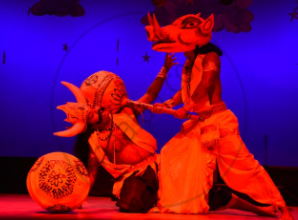Topics
Historiography : Development in the West
History : Applied History
Working of the Constitution
Historiography : Indian Tradition
The Electoral Process
Political Science : Working of the Indian Constitution
Applied History
Political Parties
History of Indian Arts
- What is ‘Art’?
- Indian Traditions of Visual Arts (Drik Kala): Painting
- Prehistoric Paintings
- Mural Paintings and Cave Painting
- Folk Styles of Paintings
- Classical Styles of Painting
- Miniature Paintings in Manuscripts
- Modern Indian Paintings
- Indian Traditions of Visual Arts (Drik Kala): Sculpture Art
- Indus Civilization Sculpture
- Folk Styles of Sculptural Art
- Classical Styles of Sculptural Art
- Indian Iconography
- Indian Traditions of Visual Arts (Drik Kala): Architecture and Sculpture
- Rock-cut Architecture
- Temple Architecture
- Indo-Islamic Architecture
- Indo-Gothic architecture
- Indian Traditions of Performing Arts
- Indian Theatre
- Indian Music
- Indian Dance
- Present Scenario of the Performing Arts
- Art, Applied Art, and Professional Opportunities
Social and Political Movements
- Movement
- Important Movements in India
- Tribal Movement
- Farmers Movement
- Worker's Movements
- Women’s Movement
- Environment Movements
- Consumer Movement
Mass Media and History
Challenges Faced by Indian Democracy
Entertainment and History
Sports and History
Tourism and History
Heritage Management
History - Imperialism
History - 20th Century Age of conflict
History - Emancipation of Asia and Africa
History - World after World War 2
Political Science
Geographical discoveries and colonization
- Concept for Geographical Discoveries and Colonization
Africa
- Imperialism - Africa
Asia: India, China, Japan
- Concept for Asia: India, China, Japan
Dictatorships in Europe, Second World War and world
- Concept on Dictatorships in Europe
- Concept for Second World War and World
First world war
- Concept on First World War
The League of Nations
- Concept for the League of Nations
Russian Revolution
- Concept for Russian Revolution
United Nations Organization
- Concept for United Nations Organization
Africa
- Emancipation of Africa
Asia
- Emancipation of Asia
Globalization
- Globalization After World War II
Scientific and Technological Progress
- Scientific and Technological Progress After World War II
Cold war
- Formation of the Cold War
Social Diversity and Democracy
- Social Diversity
- Coccept for Caste/Race and Democracy
- Concept for Language and Democracy
- Cocnept for Religion and Democracy
- Concept for Gender and Democracy
- Concept for Democracy and Diversity
Challenges to Democracy Remedial Measures to the Challenges
- Concept for Challenges to Democracy Remedial Measures to the Challenges
Internal work
Democracy
- Democracy - Meaning, Types and Characteristics
Political Parties and Types
- Political Parties
- Importance of Political Parties
- Major National and Regional Parties in India/ Types of Political Parties
Notes
Indian Theatre:
- Theatre is a fantastic style of story-telling in which one or more actors use their talents for dancing, acting, singing, talking, miming, and theatre crafts like masks, make-up, and costumes to bring to life a fictional world for the audience.
- Theatrical productions are deeply rooted in the national culture and local identity of our nation.
A. Indian Classical Drama:
- Both indigenous tradition and contemporary research can be used to pinpoint the Vedas as the source of Indian theatre.
- Bharata wrote "Natyashastra" and the dramas "Asura Parajaya" and "Amrit Manthan". One of the most influential books on theatre and other performing arts is the Natyashastra.
- Bharata mentions conversations, themes, stage, music, dance, nat (male artists), nati (female artists), music instruments, and music. As a result, we might conclude that drama peaked during the Bharata era.
- The performers, the music, the stage, and the rasa are all mentioned in Patanjali's Mahabhasya from the second century B.C. during performances known as "Kamsavadha" and "Balibandha".
- During the age of the Buddha and Mahavira, drama was a means of communicating the principles of their respective religions.
Languages based examples of Indian Classical Drama:
1. Sanskrit Classical Drama:
- Sanskrit drama is defined by the works of dramatists such as Sudraka, Bhasa, Bhavbhuti, Harsha, and Kalidasa to name a few.
- The era of the great Bhasa, whose masterpiece was "Swapana Vasabdatta", a play based on the stories of Udayana, the Ramayana, and the Mahabharata. Bhasa was another celebrated dramatist who wrote thirteen plays.
- Kautilya's Arthashastra "Vatsyayan’s Kamasutra" mentions musicians, dancers, and dramatic shows.
- Kalidasa’s "Abhijnan Shakuntalam" was written in Sanskrit and was a significant play of those times.
2. Prakrit Classical Drama:
- Prakrit plays became popular by the tenth century AD.
- Vidyapati introduced Hindi and other regional languages in the form of songs. "Umapati Mishra" and "Sharada Tanaya" were also instrumental in promoting drama during the 14th Century AD.
B. Indian Folk Theatre:
- In India, folk theatre is a synthesis of elements from music, dance, pantomime, versification, epic and ballad recitation, graphic and plastic arts, religion, and festival peasantry.
- The folk theatre, which has its roots in native culture, is deeply ingrained in local identity and social values.
- Local dialect was used in folk theatre.
Example of Folk theatre in Maharashtra
1. Tamasha:
- Traditional folk theatre of Maharashtra.
- The female actress is the chief exponent of dance movements in the play.
- The show opens with a song in honour of Lord Ganesha, sometimes referred to as Gana. The presentation of Gavalan follows. The Vag is introduced in the second chapter of Tamasha.

Tamasha Performance
2. Dashavatar:
- Dashavatara is part of the folk theatre in Maharashtra with an eight-hundred-year history.
- The ten incarnations of Lord Vishnu, the Hindu god of preservation, are referred to as dashavatars. Matsya (a fish), Kurma (a tortoise), Varaha (a boar), Narasimha (a lion-man), Vaman (a dwarf), Parashuram, Ram, Krishna, Buddha, and Kalki are the 10 incarnations.
- Dashavatara shows are presented in the regions of Konkan and Goa after the harvesting season is over.

Dashavatara Theatre - Varaha Avatar
If you would like to contribute notes or other learning material, please submit them using the button below.
